The Grove on Fenny Lane



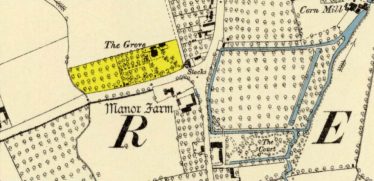
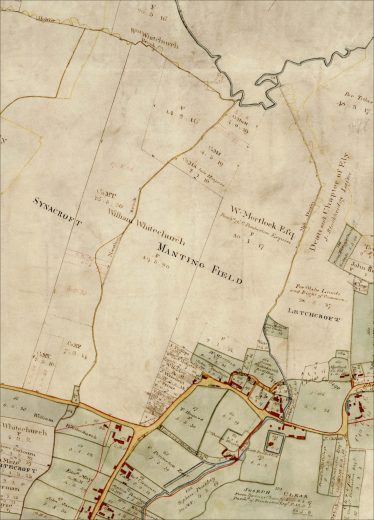
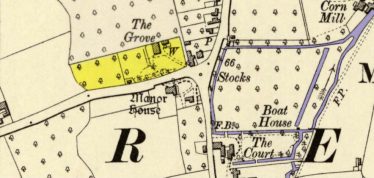


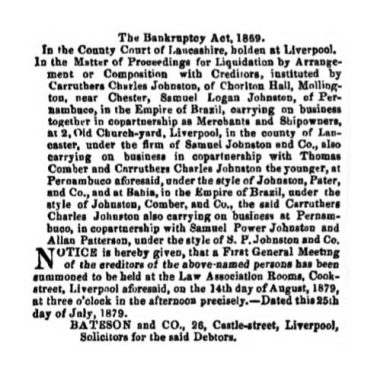
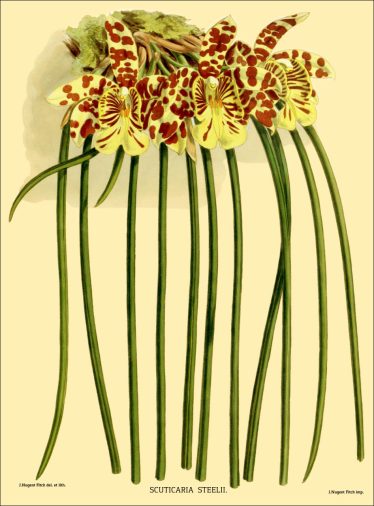
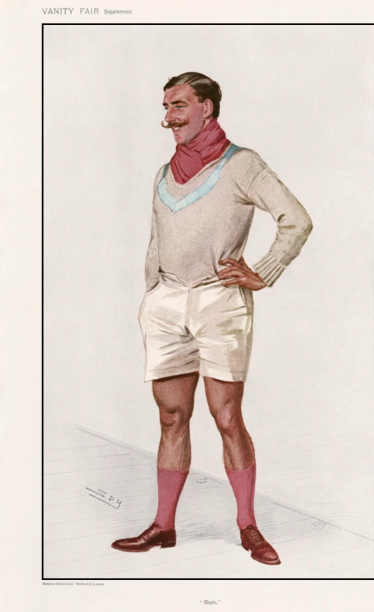

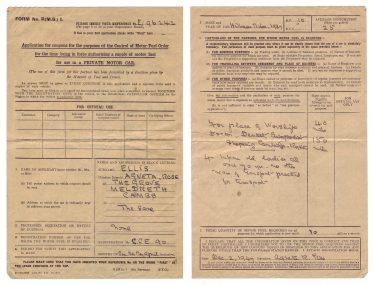
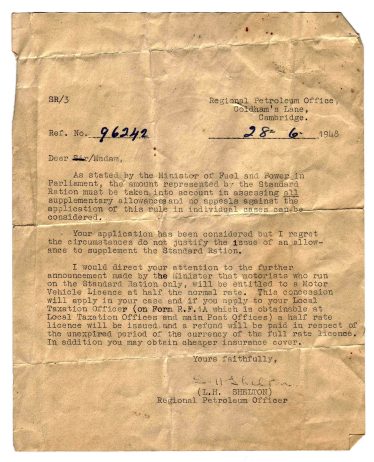
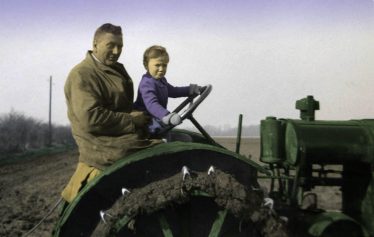
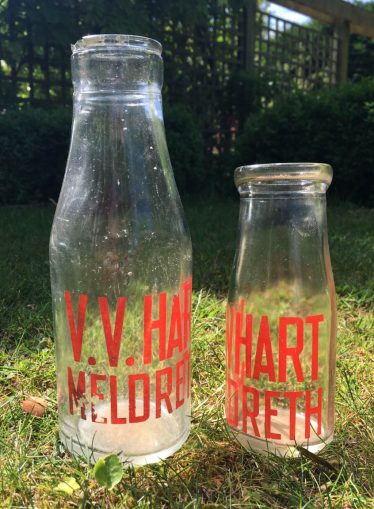



Brazil to Clacton Pier Calling at Meldreth. All Aboard !
Set back from the road and now largely hidden by trees, The Grove is an imposing Victorian residence thought to have been first built in 1856. (Photo A)
Whilst the house is quite conventional albeit most handsome in its design, as is so often the case, the stories of those who owned or lived in the house are proof that truth is always stranger than fiction.
The Building
First built utilising a four-room floor plan, the house was then altered by the addition of an extension to the rear which enlarged the two reception rooms (photos B and C). A further addition to the house incorporated a new kitchen, larder, and rooms above for domestic staff. Set into its brickwork a commemorative carved stone plaque bears the date of 1897 and the initials JGM – John George Mortlock, to whom we will return later in the article. Whether this date records the completion of both alterations or just one is now lost to history.
Much later the kitchen and larder were converted first to a garage and then, in the 1970s, to an artist’s studio, a role in which it is still utilised.
The earliest Ordnance Survey maps indicate the house was once accessed by a circular driveway which would allow horse-drawn carriages to stop outside the main entrance door and then continue on their journey. Later, possibly with the arrival of the motor car, it would seem the side entrance to the house assumed the more important role and the disused circular driveway was mostly turned over to lawn. (Photo D)
Like any house there is clear evidence of internal changes as the needs of successive occupants changed, including the closing off of doorways and the creation of new entrances into various rooms.
One less-seen feature is the design of some of the wooden window shutters. Whilst the house has the typical design wherein full-height side-hinged shutters close to the left and right into the body of the window frame, elsewhere, other windows have so called sliding sash shutters where, instead, a pair of counterbalanced wooden shutters concealed in the wall space under a hinged window sill may be raised and lowered vertically.
Water for use in the house and garden was once supplied by an outdoor well complemented by a hand-operated pump installed nearer to the house, and gas for lighting was piped from the Melbourn gas works opposite the Sheene Mill and whose building is now home to the ESSE salon.
The company first began providing a gas supply in 1869 and continued until financial difficulties forced its closure in 1914. With no other available supplier householders reverted to using oil lamps and candles and would continue to do so until the arrival of mains electricity in the village in the 1930s.
Now subdivided, the house and gardens originally occupied a rectangular strip of land on the southern edge of the much older Manting Field – a large tract of once common land bounded to the west by the Manting Brook and the River Mel to the east, extending as far north as the River Rhee.
At the time the 1820 Enclosure Map was produced, the field was equally divided with John George Mortlock’s grandfather William Mortlock in possession of much of the right half and a William Whitechurch, probably of Harlton, much of the left half. The land later allocated to The Grove lay in William Whitechurch’s half but it is believed the ownership was subsequently transferred to a John Ellis before the house was first built. (Photo E)
Certainly, John Hitch Ellis living was living and farming in the village in the 1850s. A former Army captain he was by all accounts one of Meldreth’s more colourful characters as, too, was his litigious grandson Hubert O S Ellis.
Whilst various ornamental gardens and lawns were laid out around the house all available maps show the remaining land was given over to orchard. By the time the 1946 Ordnance Survey map was printed such was Meldreth’s importance in fruit production large tracts of land including much of Manting Field behind the house had been given over to the growing of fruit trees. Today’s house owner, Mrs van Essen, recalls the Manting Field orchard and its carpet of daffodils when she and her husband purchased the house in the early 1980s though it, like many other village orchards, was grubbed up shortly after. (Photo F)
A Timeline of Residents
The Wallers
The census returns of 1861 and 1871 give us no immediate indication as to who was in residence since neither Fenny Lane nor The Grove are mentioned by name. However, by cross-referencing other familiar Meldreth surnames and knowing where they lived it seems most likely The Grove is the home of William Waller – a farmer of 154 acres – his wife Mary, and their children.
This establishes the Mortlock connection since William Waller’s wife Mary was the daughter of William Mortlock and therefore the aunt of John William Mortlock who in 1880 purchased The Court on the High Street as his main residence.
Since the house was only a few years old when the 1861 census return was taken it would also strongly suggest William Waller was The Grove’s builder.
In 1881, the census return does name Fenny Lane and confirms the now widowed and retired William Waller as the head of house. In residence with him is his son William – a brewer – and his daughter-in-law Caroline Clear, though the census enumerator mistakenly calls her Katherine.
One year later, in 1882, records show a William Waller of The Grove holding a “Sale of household furniture, books, fittings, kitchen and dairy utensils, garden tools and outdoor effects”.
William Waller senior passed away in 1890 and by 1891 William the younger and his wife Caroline had moved elsewhere in the village. The census return that year records The Grove as unoccupied.
Three single-line entries in the Cambridgeshire County archives then advise us:
1893 : Sale – House called The Grove with gardens, orchard 3 acres
1896 : Furniture at The Grove, Meldreth for Wm. Waller: £240
1900 : Sale – Household furniture and outdoor effects
Since John George Mortlock was adding an extension in 1897 it might be reasonable to assume he was the purchaser in the house sale of 1893 but we can provide no explanation as to why William Waller is still selling off more of his furniture three years later. Perhaps John George Mortlock bought the house already furnished but with the condition the fixtures and fittings remained in the possession of his nephew William.
The McDonnells
By 1900 the new occupiers are Arthur Penrose McDonnell, his wife Harriette Annie and their son Kenneth.
A Cambridge Trinity College masters graduate and schoolmaster by profession, Arthur was by then offering private tuition, and four boys including his nephew, all described as pupils, are boarding with him and his wife. Indeed, many years later a mislaid pencil once used for writing on a schoolroom slate was found inside the house.
With Arthur’s recently widowed mother-in-law, her nurse, his wife and son, four boarders and a cook and a housemaid, The Grove was a busy household.
Besides Arthur’s Cambridge University education his father also had a connection to the city. George McDonnell was a London-based architect by profession and his name appears in 1883 as responsible for the alteration and enlargement of the Guildhall in Cambridge. His new design included the addition to the rear of a large public reading room and library which was entered from Wheeler Street opposite the Corn Exchange. With its grand portico entrance and elegant domed roof, it was until recently home to the Italian restaurant owned by celebrity chef and author Jamie Oliver.
Arthur’s wife Annie, as she preferred to be called, had a most interesting family background. Her grandfather Peter Schuyler Bruff was a naval ship’s master who served in the fleet led by Rear-Admiral Sir Horatio Nelson at the Battle of the Nile in 1798. Her father, also called Peter Schuyler Bruff, was a once-famous civil engineer but whose name for many years was largely forgotten. (Photo G)
Born in 1812 and now remembered as Ipswich’s Brunel, he was engaged by the Eastern Counties Railway Company to build a new line from Shoreditch in east London to Colchester, but was dismissed acrimoniously over his time management and an unwinnable argument with his under-funded directors that the line be continued to Ipswich.
Deeming the continuation of the line to Ipswich an opportunity too important to be missed, Bruff secured new financial investment from John Chevallier Cobbold of the Suffolk brewing family and together they formed their own civil engineering company – the Eastern Union Railway Company. Overcoming significant engineering challenges Bruff did then complete the railway line to Ipswich where a blue plaque on the station platform recognises his achievement.
Electing to initially settle his family in Walton-on-the-Naze, Bruff began the work needed to develop the town into a seaside resort but with the project underway he duly turned his attention to what he considered a bigger and better development opportunity further down the coast in Clacton-on-Sea. Then just a small coastal farming hamlet, in 1865 Bruff purchased fifty acres of land at auction and began work building his new resort, with the Times newspaper reporting his promise of “none of the evils inseparable from the old watering holes…no slums…nor any object that can offend the eye.” With his flagship Royal Hotel nearing completion, in 1871 Bruff erected the very first Clacton Pier, placed his newspaper editorial and advertisements, and the new resort was launched. (Photo H)
Bruff’s noble intention was the creation of a high-class resort for an exclusive middle and upper-class clientele arriving by packet steamers able to dock at the end of his pier. To further ease access, in 1882, he completed an additional railway branch line to Clacton from Walton-on-the-Naze but, as the resort became increasingly inundated, he realised he had underestimated the appeal to seaside-loving Victorian day-trippers.
In a statement that perhaps echoes down to this day Bruff wrote:
“We need to stop the present rush of the lowest type of London trippers – men, women and children who only seem to enjoy themselves when revelling on drink and obscenity.”
Always expanding his business empire, in 1880, he purchased the Coalport china works in Shropshire and re-established it as the Coalport China Company. Bruff and, later, his son successfully restored the fortunes of the failing business by employing the most talented artists and craftsmen and expanding export sales into the United States and Canada.
Passing away in 1900 Peter Schuyler Bruff left effects valued at a not inconsiderable £64,722.
Samuel Logan Johnston
According to the 1910 Land Values map and its accompanying assessment, the owner of the house and buildings called The Grove is John George Mortlock and the occupier is sixty-year-old Samuel Logan Johnston, a “Retired Brazil Merchant.”
Compared to the McDonnell household The Grove in 1911 was a much quieter place. With his wife Margaret away visiting her parents in Surrey, Samuel’s only company is his cook and housemaid.
Like his father Carruthers Charles Johnston before him, Samuel was born near the coastal port of Recife in Brazil.
Described variously as sugar refiners, merchants, shipowners and general dealers, and with offices in both Brazil and Liverpool, the father and son’s various companies operated a shipping line importing and exporting goods to and from the UK.
By 1879, however, their businesses circumstances had changed. With wholesale prices weakening and the import market over-supplied they jointly filed for bankruptcy. (Photo I)
Having married his wife Margaret two years earlier this may have resulted in some rather uncomfortable long silences around the evening dinner table. Margaret’s father, James Rigg Brougham, was the Registrar, and later Chief Registrar, of His Majesty’s High Court of Bankruptcy….
Following his reversal of fortune Samuel elected to remain in Brazil for several more years raising a family whilst he reorganised his business affairs and resumed his trading operations between Brazil and Liverpool. His father Carruthers returned to his large country house in the Cheshire countryside also resuming his merchant activities whilst graduating from his position as local magistrate to becoming a Justice of the Peace.
Eventually retiring to Brazil, Carruthers died there in 1901 leaving Samuel a small legacy though, financially and socially, both sides of Samuel’s family had always been successful.
His great grandfather William Pennell’s family were Devonshire-Portuguese wine merchants. A father of twenty-two children he was once His Majesty’s Consul General in Brazil. Samuel’s mother Jessie Cleland Logan was the daughter of Liverpool merchant James Logan; and his grandmother Jessie Cleland Steele was the daughter of yet another merchant, Matthew Steele. Described in contemporary trade directories as a soap boiler and tallow maker this hid the fact that Matthew was the owner of Liverpool’s then largest manufacturer and exporter of soap.
Steele’s son, another Matthew – Samuel’s great uncle – also traded in sugar exported from his slave plantations in the colony of British Guyana. Subsequently financially compensated by the British government in 1835 when his slaves were emancipated Steele’s name lives on in a species of orchid he collected and brought back to the UK – the Scuticaria steelei. (Photo J)
James Logan himself ran foul of the Anti-Slave Trade Squadron when, in 1840, his merchant ship was impounded and condemned for transporting goods from Brazil to West African slave traders.
Samuel’s father-in-law’s family – the Broughams – were owners of large country estates in Westmoreland. James Rigg Brougham’s uncle Henry, a baronet, served as an MP, designed the brougham horse-drawn carriage, led the legal team that defended Queen Caroline against King George IV’s accusations, and later became Lord High Chancellor. In marked contrast to slave-owner Matthew Steele, Henry played a prominent role in the 1833 Slavery Abolition Act and amongst many other claims to fame he also holds the record for the longest speech made in Parliament. Six hours….
Samuel and Margaret’s time in Meldreth was not without loss. They made a significant contribution towards the Meldreth war memorial fund having lost their youngest son Lieutenant Alexander Vyvyan, their son-in-law Lieutenant Colonel Edward Townshend Logan DSO, and Edward’s brother Captain Roland Logan in the Great War.
On a less sombre note, Samuel’s nephew Banner Carruthers Johnston rowed for Cambridge, winning the University Boat Race three times out of four. Promoted to the rank of Lieutenant in the Black Watch, he was awarded an OBE and for many years was the rowing correspondent for the Daily Telegraph. (Photo K)
The Ellis Sisters
“I wish I could convey to you the quality of the lives of the Ellis sisters whom we used to visit: they were the height of Edwardian refinement – the kind of Non-Conformists who have marked Cambridgeshire and its environs since the seventeenth century.”
So described were the four Ellis sisters – Evelyn, Agneta, Selina and Mabel – who purchased The Grove from Samuel Logan Johnston in 1928 for the sum of £2000.
Samuel may have previously purchased the freehold to the property upon the death of John George Mortlock in 1917 when his estate was sold off by his executors. Despite leaving Meldreth for Pinner in Middlesex it would seem that Samuel maintained his local connections. He passed away in 1939 in St George’s Nursing Home on Kneesworth Street in Royston and he left his estate to the Reverend Henry McNeice of Melbourn and to Henry’s son Desmond, himself the vicar of Meldreth and Melbourn between 1961 and 1972.
The four Ellis sisters all hailed from Thriplow where their father Joseph Ingle Ellis was a large land-holding farmer and Lord of the Manor. Similarly, Joseph’s brother, John Ingle Ellis, was Lord of Wimbish Manor in Shepreth.
Both Thriplow and Shepreth had a history of religious nonconformity even before the Meldreth puritan preacher the Reverend Joseph Oddy and his fellow preacher the Reverend Francis Holcroft of Barrington were imprisoned for their beliefs after the Restoration of the Monarchy in 1660.
Forming a “gathered” church the two preachers drew the support of hundreds of followers across the counties of Bedfordshire and Cambridgeshire. A century later the Methodist cleric John Wesley joined a crowd of nearly two thousand in Thriplow to hear the words of another travelling puritan preacher.
Against this religious background the Ellis sisters’ father, grandfather and great grandfather, all called Joseph, were leading Non-Conformists in Thriplow and the surrounding villages. The eldest Joseph was a deacon at the Independent Chapel in nearby Fowlmere though, ironically, for many years both he and his son were also churchwardens in Thriplow. This was probably in part a reflection of their elevated social status within the village combined with the accommodating nature of the village vicar who was content not to confront their religious beliefs.
This mutually convenient arrangement came to an abrupt end with the arrival of a new vicar in 1832, the Reverend Jenks, who wrote to the Cambridge newspaper accusing Joseph II of ridiculing the church in front of his farm workers and, perhaps more tellingly, of withholding payment of his not inconsiderable church rates. Rectory Farm, the Ellis family’s home at that time was ultimately owned by the lay rectors of Peterhouse College.
Undaunted and perhaps encouraged by the rift in the relationship, Joseph II, by 1835, had built a new Independent chapel for the ever-growing congregation of dissenters in the village.
In 1862 Joseph III built a new family home – Thriplow House – where the sisters were raised. On his decease in 1890 Joseph Ellis’s estate passed to their brother Arthur who continued the family farming business before declining health caused him to sell much of his significant land and property holdings. This was in 1927 – the year before his sisters moved to Meldreth and purchased The Grove.
All four spinster sisters and Isabel Mary Gifford, their recently widowed sister, were in residence as war broke out in 1939 but owning a Hillman Minx motor car and using their additional wartime petrol allowance Mr John Blows, formerly of Thriplow and latterly residing on Meldreth High Street, would act as their chauffeur. (Photo L)
Their applications for additional fuel over their basic allowance notes their need to visit their places of worship, their doctor, dentist and chiropodist, and to shop in Cambridge and Royston whilst confirming they are four infirm old ladies with no other practical means of transport. (Photo M)
By 1948, however, Laurence Shelton, the Regional Petroleum Officer based in Coldham’s Lane in Cambridge would no longer consider their application for additional fuel, though he did note that as Standard Ration motorists it would entitle them to a Motor Vehicle Licence at half price. (Photo N)
Evelyn was the first sister to pass away in 1943. She was followed in 1953 by Selina and Agneta a year later. The sole surviving unmarried sister Mabel then, in 1959, sold The Grove to her next-door farming neighbour Valentine Vernon Hart and his wife Kathleen Brightwell. For the house and land Mr Hart paid Miss Ellis £4350. One year later the widowed sister Isabel passed away in Cambridge leaving estate valued at almost £95,000.
In stark contrast, villager Ken Winter recalls visiting The Grove in the early 1950s at Christmas time. He and his friend Peter Harrup stood outside and sang two carols before ringing the doorbell. After what seemed an eternity where all they could hear was the sound of feet running up and down the stairs, finally the door swung open and a Miss Ellis rewarded their best efforts with…. a half-penny.
The Harts
Valentine Vernon Hart was born in Shepreth in 1906 where his father Henry was the manager of the cement works at Barrington. Kathleen, his wife, was the daughter of Shepreth Mill owner Walter Brightwell. (Photo O)
With his herd of Jersey cows Vernie as he was known locally ran his dairy business from Fenny Lane Farm delivering milk by horse and cart to his customers in Meldreth and the surrounding villages. In the 1950s Vernie joined forces with his friend and fellow Meldreth businessman Bill Dash and together they founded the Royston Milk Company located in Stamford Yard next door to today’s town museum on Kneesworth Street in Royston. (Photo P)
Remembered by their friends and neighbours as very kind people, Vernie and Kathleen raised two children – Roger and Christine. Roger, like Vernie, was a hard-working farmer who, after his father’s passing, continued the running of Fenny Lane Farm. Although he had once expressed a desire to emigrate, perhaps to New Zealand, he was committed to both his farm and his family and spent his whole life living and working in Meldreth. Building on his late father’s legacy and as market demands changed, he successfully oversaw the reorganisation of the family business away from dairy and across to arable production. (Photo Q)
His farming neighbour Terry, the son of Bill Dash, over the years became ever closer friends with Roger and fondly remembers him as a gentleman and countryman who would always lend a helping hand whether it be farming advice, putting the world to rights, or helping load Terry’s loose grain onto the lorries at harvest time.
Always a keen sportsman Roger would travel to Scotland and the Welsh Borders to fish for salmon whilst organising regular shooting parties on his land. Besides his other loves of jazz, greyhounds and horse racing, cricket was Roger’s passion. As a boy he had a practice net set up on the front lawn of Fenny Lane farm where he and his friends could master their bowling and batting skills. Playing cricket ran in Roger’s family. His uncle Harold Baxter Hart from Harston had once played for, and captained, the Cambridge County cricket team.
Incidentally, Harold’s sister, and Roger’s aunt, Grace was married to Harry Adcock and lived for many years next door to The Grove in Geneva House which stands facing the stocks on Marvell’s Green.
Having married his wife Joy in 1963, Roger and his mother Kathleen inherited The Grove from Vernie after his passing the same year. Over the next twelve years, outside of his farm work Roger and Joy raised their three daughters whilst living in The Grove, one of whom, Philippa, still lives in the village and is a recently retired elected District Councillor.
Roger subsequently built two new houses in Fenny Lane between his farm and The Grove – one for his widowed mother Kathleen and the second for his own family. His standing joke with Terry was at some point in his life he had lived in every house on Fenny Lane.
Bridget Marshall
Mrs Marshall moved to The Grove in 1975 with her four children Belinda, Robert, James, and Cressida after divorcing her husband Sir Michael Marshall, the CEO of Marshall Aerospace and Defence in Cambridge. The house was purchased for £41,000.
A keen gardener, Bridget turned parts of the grounds over to a large vegetable plot and a tennis court whilst re-laying other areas, and much of her garden design remains to the present day. (Photos R and S)
Sir Michael died in 2019, and their son Robert is now Chairman of Martlet, a firm investing in early-stage companies, primarily in Cambridge.
Dr and Mrs van Essen
Sold by the Marshall Family Trust, in 1982 Dr and Mrs van Essen, the present owners, purchased The Grove for £108,000. They adapted the stable block to create two more garages within the original footprint.
Christopher van Essen, who did research in electron microscopy at Oxford, was working for PA Technology, in Melbourn. Christopher left PA in 1988 to help start The Technology Partnership (TTP).
Lizanne van Essen met Christopher when she started at Oxford. She is an artist and illustrator, specialising in sculptural Artist’s Books. Her work is in several permanent collections, in the UK and abroad. She also worked for many years as a tutor.
Christopher and Lizanne were two of the four founders of Meldreth Croquet Club. Christopher has played in tournaments all over the country, and abroad, including playing in some County competitions.
With fellow villager John Rogger, he provided the detailed design and site survey for Meldreth’s Meridian Marker on Fenny Lane, which was unveiled by The Astronomer Royal, Sir Martin Rees (now Lord Rees) in December 1999.
Christopher and Lizanne have two children: Dominic, who is a research biologist working for IRCAN in Nice; and Tamsin, who is an award-winning ceramic artist. There are three grand-children.
Between 1985 and 1988, when work commitments took Dr and Mrs van Essen overseas, the house was rented: firstly, to the Gouverneurs whose friend, a Jordanian princess, stayed a year with them; and secondly to the Walker family from the United States.
And so, we conclude our visit to The Grove and the tales of its fascinating residents. The author extends his grateful thanks to Mr Terry Dash and to Dr and Mrs van Essen for their assistance in preparing this article.





No Comments
Add a comment about this page